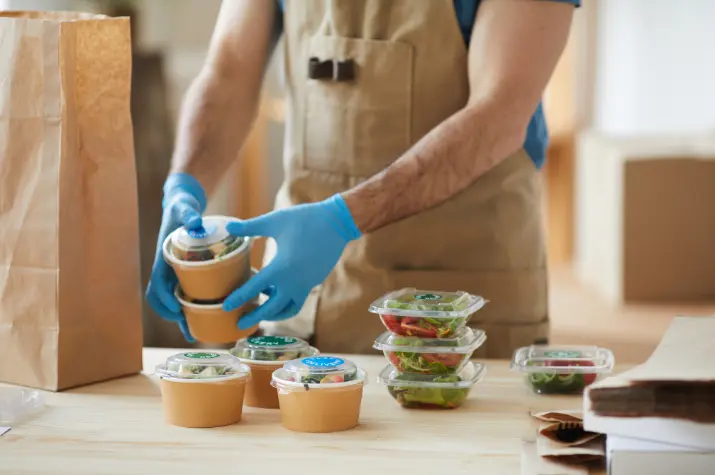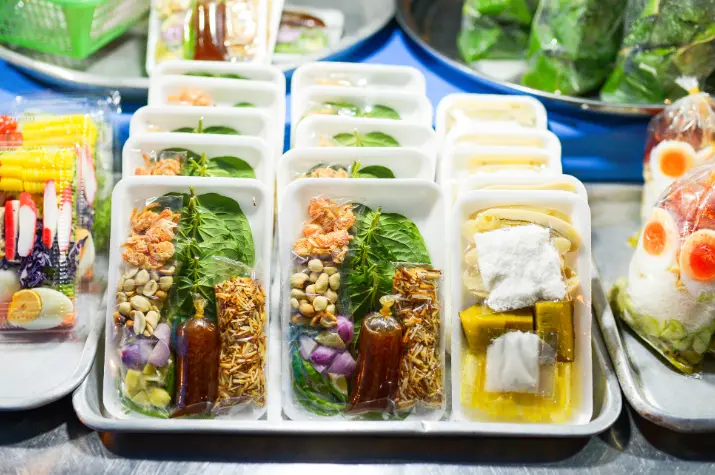
In the restaurant business, fresh food packaging is essential for maintaining the freshness and quality of products as well as improving the entire eating experience for patrons.
5 Benefits of Fresh Food Packaging for Restaurants
This post will discuss the top five advantages of fresh food packing for eateries and how it raises both client happiness and operational effectiveness.
1. Preserving Freshness and Quality
Preserving the quality and freshness of ingredients is one of the main advantages of fresh food packaging for eateries. Perishable goods such as vegetables, fruits, meats, and milk and cheese are better protected against deterioration, contamination, and spoiling when they are packaged properly.
Restaurants can ensure that their dishes taste great and are of the highest caliber by keeping ingredients fresh from the moment they are procured until they are delivered to patrons.
Furthermore, premium packaging materials provide an impenetrable shield from outside factors like air and light, which can deteriorate food quality over time. This guarantees that the components maintain their nutritious content and flavor for extended periods.
Utilizing innovative high-quality fresh food packaging solutions can significantly enhance the overall dining experience and customer satisfaction.
2. Enhancing Food Safety
Restaurants place a high premium on food safety, and one of the most important ways to guarantee that ingredients are safe to eat is through fresh food packaging.
Foodborne dangers such as bacterial growth and cross-contamination can be avoided by using packaging materials that are engineered to comply with food safety regulations.
Furthermore, customers may feel confident knowing that their food hasn’t been tampered with or otherwise compromised during its transportation or storage thanks to tamper-evident seals and safe packaging options.
Additionally, reheating leftovers safely and practically is made possible by packaging that is freezer-, microwave-, or oven-friendly, which lowers the risk of illnesses that are linked to incorrect food handling procedures.
3. Extending Shelf Life

In addition to extending the shelf life of components, fresh food packaging helps restaurants reduce food waste and improve inventory control.
Modified atmosphere packaging (MAP), vacuum-sealed packaging, and other cutting-edge packaging techniques assist in extending the shelf life of perishable goods by limiting their contact with oxygen, moisture, and other spoiling agents.
Restaurants can guarantee a more effective supply chain and cut expenses related to food waste by prolonging the shelf life of materials. Longer shelf lives also allow restaurants to purchase products in bulk, benefit from bulk pricing, and lessen the need for frequent restocking, all of which increase overall operational effectiveness and profitability.
4. Supporting Brand Image and Sustainability
The environmental initiatives and brand image of a restaurant can both benefit from the usage of fresh food packaging. Eco-friendly packaging materials, including recyclable or biodegradable alternatives, show a company’s dedication to eco-friendly business operations and appeal to customers who share this concern.
Restaurants may improve their brand image, draw in eco-aware patrons, and help achieve the larger objective of lowering plastic waste and environmental effects by adopting sustainable packaging trends.
Furthermore, branded packaging that has slogans, logos, or trademark colors is an effective marketing strategy that raises consumer awareness of the brand.
Restaurants may stand out in the competition, win over repeat business, and increase customer loyalty by implementing eco-friendly and aesthetically pleasing packaging options.
5. Facilitating Convenience and Portability
In the context of takeaway, delivery, and grab-and-go alternatives, fresh food packaging gives restaurants and customers convenience and portability.
Packaging options that make it simple for clients to enjoy restaurant-quality dinners on the move or at the ease of their own homes include paper bags, disposable containers, and biodegradable packaging.
Restaurants may further improve the entire eating experience by utilizing creative package designs or formats to improve the display and appeal of their food.
Additionally, portion-controlled packaging minimizes over- or under-portioning, which helps restaurants maintain uniformity in serving sizes and cut down on food waste.
Conclusion
To sum up, restaurants may reap a host of advantages from fresh food packaging, such as maintaining food quality and freshness, increasing shelf life, improving food safety, ease of mobility and convenience, and bolstering brand image and sustainability.
Restaurants may streamline operations, improve the eating experience for patrons, and stand out in a crowded market by investing in premium packaging solutions and putting best practices in packing and storage into effect.
Fresh food packaging will always be crucial to food service operations and customer pleasure, even as consumer tastes change.
About The Author:
Anne Kamwila is a freelance content writer and a digital marketer. She is passionate about writing about health, technology, and business-related guides, news, and books.




